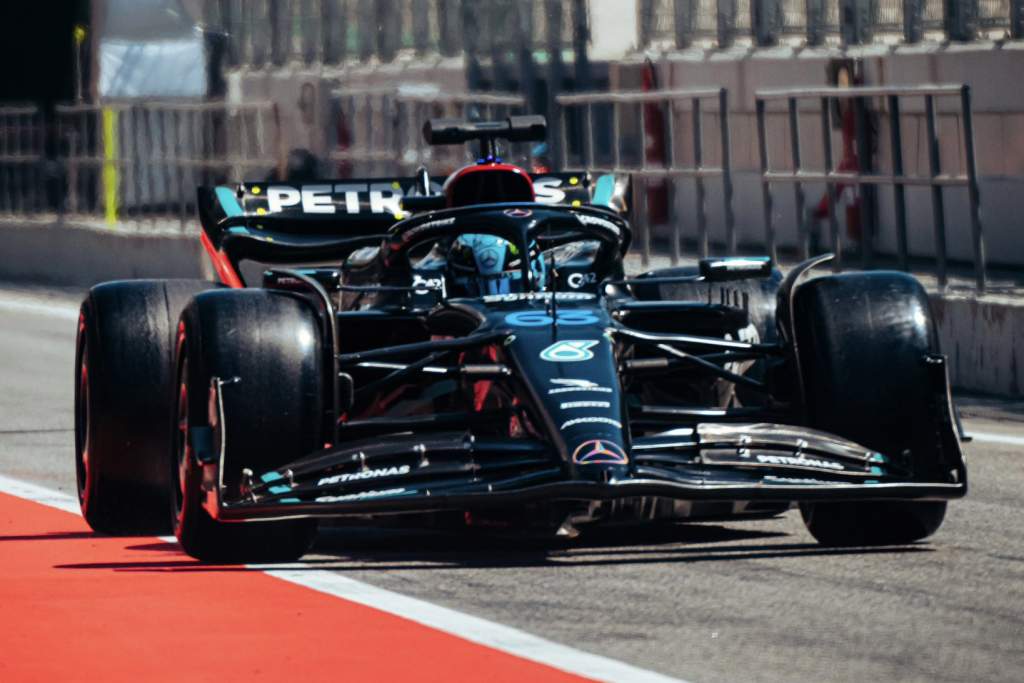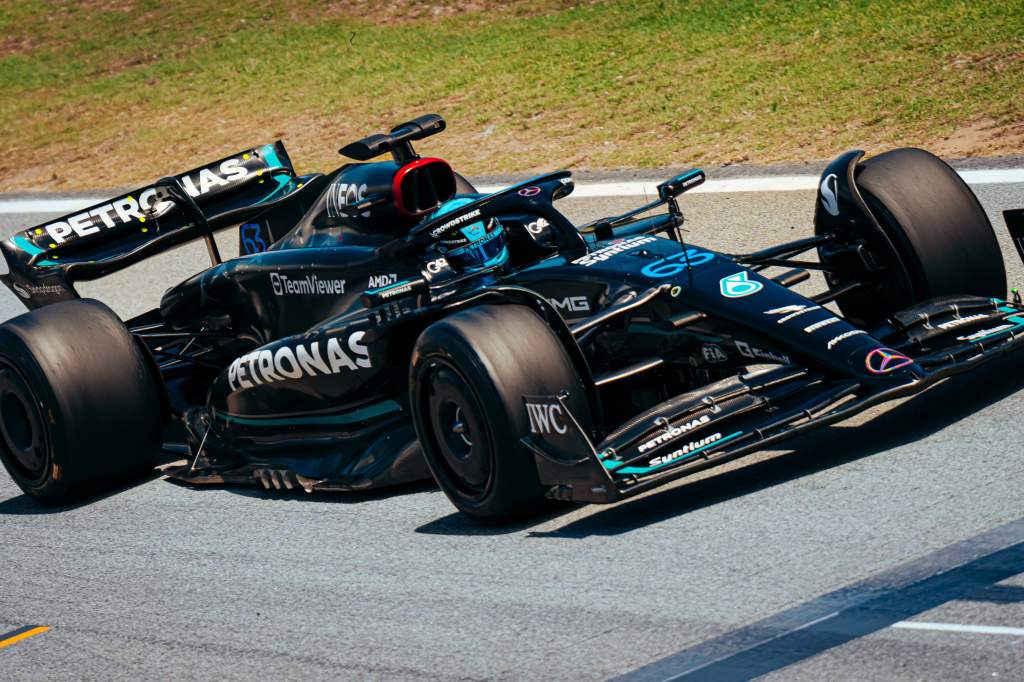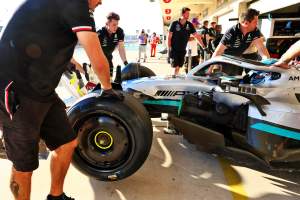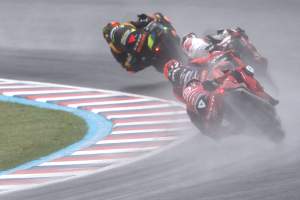Up Next

Grand Prix Drivers’ Association director George Russell says Formula 1 isn’t in a position to race with slick tyres that do not use tyre warmers in 2024 having participated in Pirelli’s most recent test of the development rubber.
F1 originally planned to ban all forms of tyre warmers for next season, but in February announced that this had been put on hold. However, provision was made for Pirelli to make a recommendation to the FIA about going ahead with the ban for next year after further testing. The FIA can then put it to a vote that must take place no later than July 31 requiring the support of at least five teams. If the FIA does not put it to a vote, the current tyre warmer regulations will remain in place.
Pirelli has continued to develop blanketless tyres and is confident the ban can still go ahead, with Mercedes and Ferrari running them in a post-Spanish Grand Prix test at Barcelona last week. There’s one more test scheduled, at Silverstone next month, before the deadline for the possible vote.
Russell felt the tyres worked well in testing in Spain, but the fact that this was at high track temperatures and immediately after a full GP weekend means he’s still concerned about the characteristics in cool conditions such as he experienced in earlier Pirelli tests.
Pirelli has previously stated that the key parameter was making viable blanketless slick tyres produce acceptable grip quickly at low pressures when leaving the pits.
“In hindsight it probably wasn’t tested in the right conditions at the right circuit,” said Russell when asked whether the tyres he tested in Spain last week are raceable.

“If you go to a circuit such as Barcelona which is quite an aggressive Tarmac, it was 40 degrees track temperature, fully rubbered in from race weekend, the tyres were very sketchy coming out of the pitlane but by about Turn 5 on the out-lap it was at a respectable level.
“But if I compare that in contrast to the start of the year, when I did one run in Jerez in 10-degree track temperature it was extremely difficult out of the pits.
“If I’m being totally honest, I don’t think we as a sport are at a position to bring these tyres into a racing scenario.
“I will be very concerned for all the mechanics in the pitlane during a pitstop, I’d be very concerned for the out-lap in a race in cold conditions. There will be crashes, I have no doubt about it.
“There’s a lot of work and expense going into these tyres, I feel like that could be put elsewhere.”
Ferrari driver Charles Leclerc also participated in the Barcelona test and is unsure about the viability of running the tyres despite describing his experience as “positive”.
This is partly because he hasn’t driven the tyres in the lower-temperature conditions that has led to many drivers, including Lewis Hamilton, questioning the wisdom of the planned 2024 tyre-warmer ban.

“In the conditions that I had during the test, it was good and it went well,” said Leclerc of the test tyres.
“But in lower temperatures, I don’t know, I haven’t tested these tyres in lower temperatures. And that’s where the big question mark is.
“It’s very difficult to answer whether I will be happy to go. I would like to maybe test those tyres in different conditions and then see whether they are raceable in all conditions. But it was a positive test with the conditions that we’ve had in Barcelona.”
Leclerc echoed Russell’s comments about the grip level being good once he got to Turn 5 on an out-lap, and that if this was repeatable in all conditions then it could be acceptable.
But he’s aware that the warm-up period will be far longer in lower track temperatures, and highlighted the risk of going through that phase while battling other cars.
“You’ve got four or five corners where it’s very tricky, where the tyres need to get into temperature,” said Leclerc.
“When you are alone on track it’s not that much of a problem. But of course, if you’re racing other cars, then it becomes very difficult to manage.
“If it remains four or five corners, then it’s something that we could consider, but obviously with very low [temperature] conditions, I expect this to be much longer this warm-up period. And this could become difficult.”
The rationale for banning such technology is as part of F1’s sustainability push as it will eliminate the power used by running tyre blankets.
Currently, tyre warming is limited to two hours at 70C for slicks and the same length of time at 60C for intermediates. Pirelli introduced wet tyres that do not require blankets at the Monaco Grand Prix, but as the wet tyres are designed to operate at much lower temperatures this is easier to achieve than with dry tyres.

Fernando Alonso is another driver sceptical about the wisdom of the tyre warmer ban, and also warned that Barcelona in June will not have offered the most challenging conditions.
“It depends on the tyre energy that you put on that specific circuit,” said Alonso.
“In Barcelona it will help the tyres, some others it will make things very difficult. Indy [500], you put a lot of energy in the tyres immediately and it was fine, places like Monaco or some others [less].
“I’m not a big fan of removing the blankets to be honest and I don’t see the reason why.”






